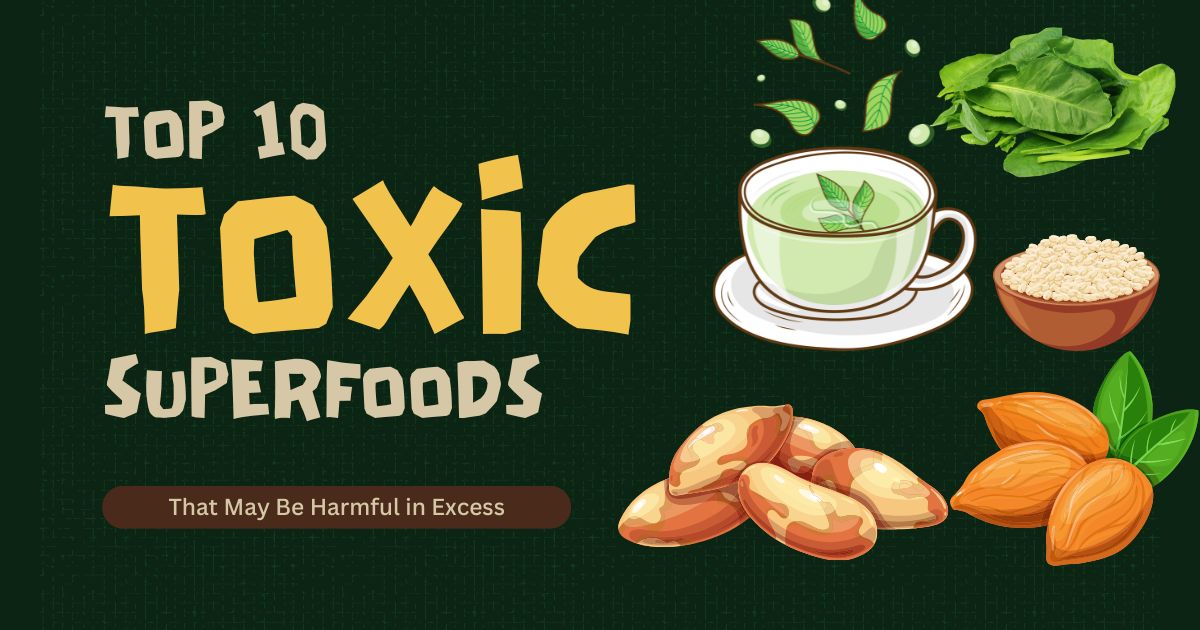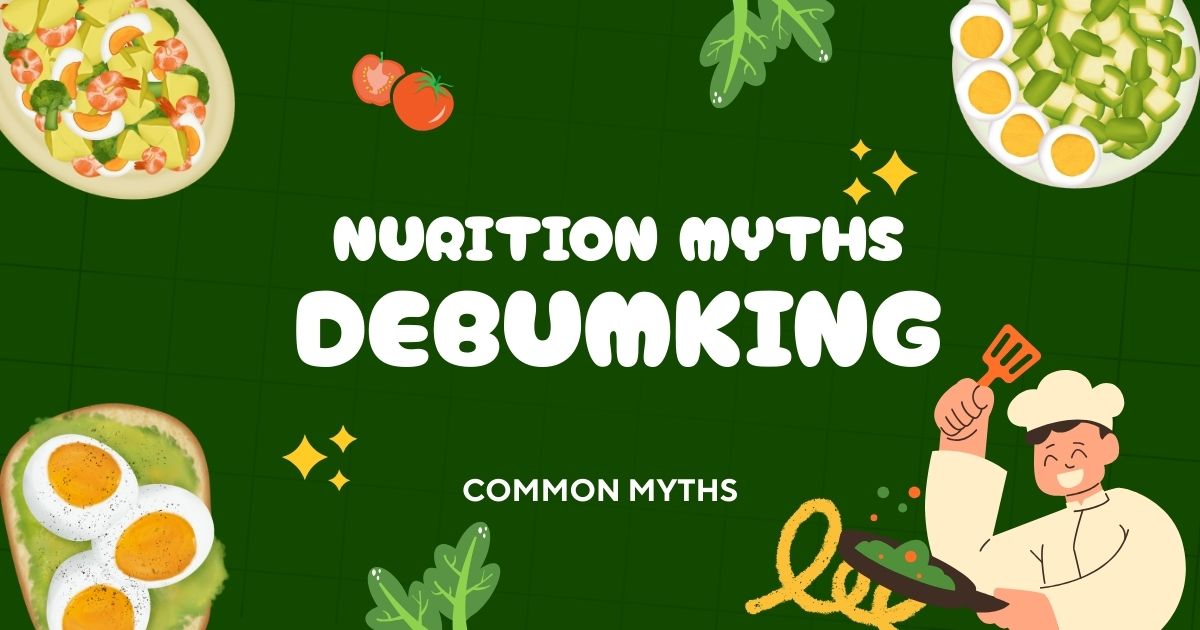Superfoods are widely praised for their nutrient density and health benefits. They are often marketed as miracle foods that can prevent diseases, boost energy, and improve overall well-being. However, not many people know that some superfoods can become toxic if consumed in large quantities. While these foods are healthy in moderation, overconsumption or improper preparation can lead to health risks.
In this article, we’ll explore the toxic superfoods list, their potential side effects, and how to safely consume them without compromising your health.
What Are Superfoods?
Superfoods are nutrient-rich foods considered to be especially beneficial for health. They are often packed with antioxidants, vitamins, minerals, fiber, and healthy fats. Examples include kale, chia seeds, blueberries, quinoa, and green tea.
However, the term “superfood” is more of a marketing label than a scientific classification. Even the healthiest foods can have risks if eaten excessively or in the wrong way.
Why Some Superfoods Can Be Toxic
The toxicity of superfoods usually depends on the following factors:
-
Excessive intake – Eating too much of a certain nutrient can overload the body.
-
Natural compounds – Some foods contain substances like oxalates, alkaloids, or heavy metals that may be harmful.
-
Allergies or intolerances – A healthy food for one person may cause an adverse reaction in another.
-
Preparation methods – Some foods are toxic when raw but safe when cooked properly.
Toxic Superfoods List
1. Kale
-
Why it’s healthy: Rich in fiber, antioxidants, vitamin C, and vitamin K.
-
Why it can be toxic: Kale contains high levels of oxalates, which may contribute to kidney stones if consumed excessively. Some varieties can also accumulate thallium, a heavy metal, from soil.
-
Safe consumption: Limit raw kale intake, and include a variety of leafy greens in your diet.
2. Chia Seeds
-
Why it’s healthy: Packed with omega-3 fatty acids, fiber, and protein.
-
Why it can be toxic: When soaked improperly or eaten dry, chia seeds can swell and cause esophageal blockages. Excessive fiber may also lead to bloating, gas, or digestive discomfort.
-
Safe consumption: Always soak chia seeds before eating and consume them in moderation.
3. Spinach
-
Why it’s healthy: Excellent source of iron, folate, and vitamin K.
-
Why it can be toxic: Like kale, spinach is rich in oxalates, which may increase the risk of kidney stones. Overeating can also interfere with calcium absorption.
-
Safe consumption: Pair spinach with calcium-rich foods to balance oxalate effects.
4. Green Tea
-
Why it’s healthy: Loaded with antioxidants, particularly catechins, which help fight free radicals.
-
Why it can be toxic: Excessive consumption may cause liver toxicity due to high catechin concentration. It also contains caffeine, which can lead to insomnia, anxiety, or heart palpitations.
-
Safe consumption: Limit to 2–3 cups a day and avoid highly concentrated green tea extracts.
5. Soy Products
-
Why it’s healthy: Great plant-based protein and a source of isoflavones that support heart health.
-
Why it can be toxic: Overconsumption may disrupt thyroid function in people with hypothyroidism. It may also cause hormonal imbalances due to phytoestrogens.
-
Safe consumption: Enjoy soy in moderation and choose fermented varieties like tempeh or miso.
6. Brazil Nuts
-
Why it’s healthy: Richest natural source of selenium, which supports immunity and thyroid health.
-
Why it can be toxic: High in selenium, which in large doses can cause selenium poisoning (symptoms include nausea, hair loss, and nerve damage).
-
Safe consumption: Limit intake to 1–2 nuts per day.
7. Quinoa
-
Why it’s healthy: A complete plant-based protein, high in fiber, iron, and magnesium.
-
Why it can be toxic: Contains saponins, bitter compounds that can cause digestive irritation if not washed properly before cooking.
-
Safe consumption: Rinse quinoa thoroughly before cooking.
8. Nutmeg
-
Why it’s healthy: Contains antioxidants and compounds that support brain health.
-
Why it can be toxic: In high amounts, nutmeg contains myristicin, a compound that can cause hallucinations, nausea, and even seizures.
-
Safe consumption: Use nutmeg only as a spice, not in large doses.
9. Seaweed
-
Why it’s healthy: High in iodine, vitamins, and minerals that support thyroid function.
-
Why it can be toxic: Excessive iodine intake may lead to thyroid dysfunction. Some seaweed also contains heavy metals like arsenic or mercury.
-
Safe consumption: Eat seaweed a few times a week, not daily.
10. Almonds (Bitter Variety)
-
Why it’s healthy: Almonds are nutrient-dense, providing healthy fats, fiber, and vitamin E.
-
Why it can be toxic: Bitter almonds (not the sweet ones we usually eat) contain cyanide, which is highly toxic.
-
Safe consumption: Stick to sweet almonds sold commercially.
Hidden Dangers of Overconsumption
Even healthy superfoods can cause health issues if eaten in excess. Some possible side effects include:
-
Kidney stones (from oxalates in leafy greens)
-
Hormonal imbalance (from soy or excess flaxseed)
-
Heavy metal toxicity (from contaminated seaweed)
-
Digestive problems (from high-fiber foods like chia seeds)
-
Nutrient imbalances (from consuming too much of a single food source)
How to Safely Include Superfoods in Your Diet
-
Practice Moderation – Don’t rely on one superfood daily; diversify your diet.
-
Proper Preparation – Wash, soak, or cook foods like quinoa and beans properly to reduce toxins.
-
Know Your Health Conditions – People with kidney issues, thyroid problems, or allergies should be extra cautious.
-
Rotate Superfoods – Switch between different nutrient-rich foods to avoid excessive exposure to certain compounds.
-
Consult a Professional – If you consume supplements or extracts, talk to a nutritionist or doctor.
Final Thoughts
The toxic superfoods list shows that while superfoods are packed with nutrients, they can have risks if consumed in excess or prepared improperly. Foods like kale, chia seeds, green tea, and soy offer many health benefits but may cause issues like kidney stones, thyroid problems, or liver toxicity when overused.
The key takeaway is balance and moderation. Instead of overloading on a single “superfood,” aim for a varied diet that includes different fruits, vegetables, grains, proteins, and healthy fats. This approach ensures you get the full spectrum of nutrients without the risk of toxicity.
Also Read :Headache After Eating: Causes & Solutions
FAQs
1. Can superfoods really be toxic?
Yes. While superfoods are nutrient-rich, overconsumption or improper preparation can lead to harmful effects such as kidney stones, hormonal imbalance, or digestive issues.
2. How much kale is safe to eat daily?
1–2 cups of kale a few times a week is safe. Eating it every day in large amounts may increase the risk of oxalate buildup and heavy metal exposure.
3. Are chia seeds safe for everyone?
Chia seeds are safe for most people when soaked and eaten in moderation. However, those with digestive issues or swallowing difficulties should be cautious.
4. What is the most toxic superfood if eaten in excess?
Brazil nuts can be particularly toxic because of their high selenium content. Eating more than 3–4 daily over time may cause selenium poisoning.
5. Should I stop eating superfoods because of these risks?
No. Most superfoods are safe and beneficial when consumed in moderation. The key is variety, proper preparation, and mindful portion control.



